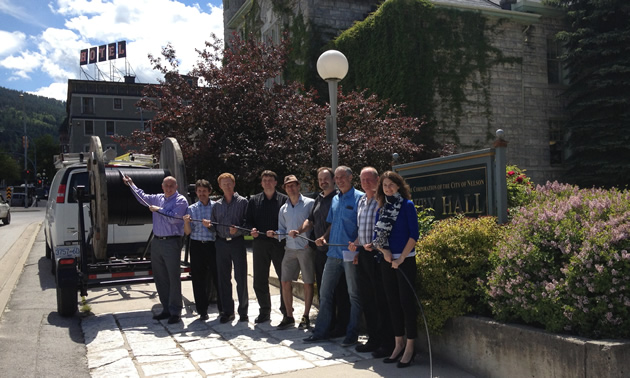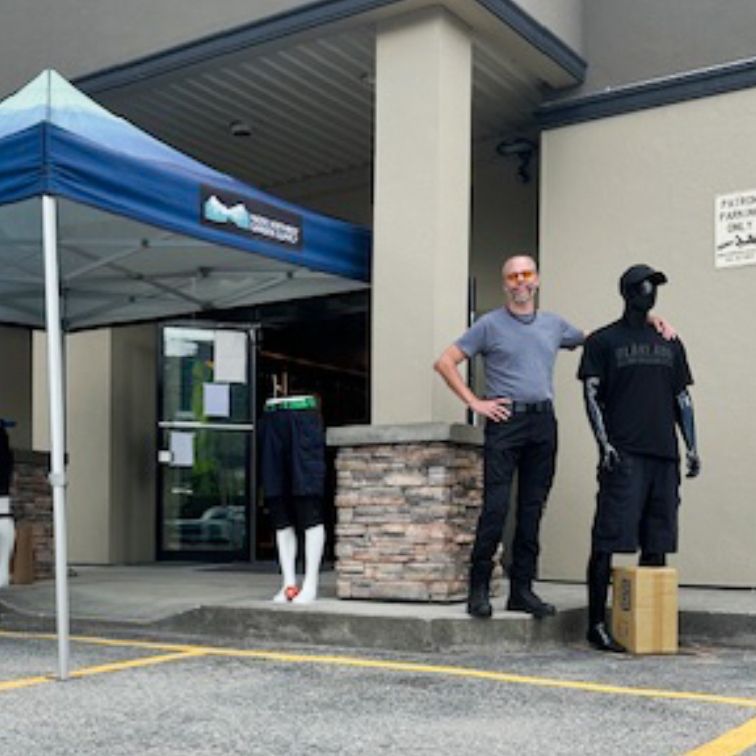Broadband for Columbia Basin and Boundary
The infrastructure for fibre optic broadband service is available to businesses in Nelson, B.C.
The goal of a recent Community Futures regional conference held in Nelson, B.C., was to create access to fibre optic broadband infrastructure in B.C.’s Columbia Basin and Boundary region communities. The idea is to leverage the broadband for the purpose of community economic development, as broadband is now seen as a necessary basic service like power and water.
In Nelson the fibre optic cable is already in place, anticipated by the City when infrastructure upgrades were done in 2011. Fibre optic broadband is more than 10 times faster than a conventional network, and broadband is not just Internet. It can very quickly receive and transmit large volumes of data, including video, images and audio files.
Broadband is better
Two things make broadband especially attractive to both user and provider. First, fibre optic cable has exponentially greater capacity than conventional copper infrastructure—think culvert versus garden hose—resulting in much greater speed for both upload and download. This adds to everyday efficiency and is especially important at times when large electronic files need to be transmitted quickly, as in medical emergencies and times of peak Internet usage. Second, the infrastructure has a lifespan of up to 40 years, providing the community with a long term, viable asset.
“The capacity will only continue to grow as technology advances,” said Andrea Wilkey, executive director at Community Futures Central Kootenay. “What enhances the capacity of the system is the electronics—and that’s in the realm of the service providers.”
The Columbia Basin Broadband Corporation, a subsidiary of Columbia Basin Trust, has a mandate to expand access to broadband in the region. Wilkey said that because of that support, communities are more motivated to look at how they can bring broadband in.
The Nelson project is being led by the Nelson & Area Economic Development Partnership (NAEDP), encompassing the City of Nelson, the Nelson & District Chamber of Commerce, Community Futures Central Kootenay and the Regional District of Central Kootenay, Areas E and F. The project requires infrastructure, service providers and users, just like a transportation system of roads, buses and fare-payers.
Nailing the need
Since the fibre optic cable is already in place in Nelson, the next phase will connect the fibre to businesses. Research has been done by the NAEDP to make sure that this project is relevant to what’s needed.
“We wanted to determine the challenges that businesses face that will be addressed with improved, reliable, high-speed Internet access,” Wilkey said. “We also wanted some advice on how delivery of broadband should be structured. We hired a consultant to research best practices on community broadband throughout North America, Canada and the region. We’ve talked to local broadband service providers about how to structure this, and we’ve developed a website to help with communication and sharing information.”
Pillars of the project
The supporting “pillars” of a project this far-reaching are unique and complex, and include such concepts as broadband infrastructure; creating, attracting and retaining a knowledge workforce; innovation and supporting programs; digital inclusion and training; and marketing and advocacy.
Because each community will need to determine its own plan, adapted to its own needs and challenges, the service in each community will have its own nuances. That’s exciting for the potential users of the service, allowing those already in place to have some input into the developing system. A business coming on the scene later will be able to settle in the community with services that best suit its needs.
“There are grants available for developing strategies for implementing such a project," Wilkey said, "but communities and businesses both need to make an investment.”
Community Futures will offer workshops to help businesses understand what the applications are for broadband and how it will help them to expand their businesses and be competitive. Broadband can drive innovation and open many doors for businesses, enabling them to stay future-proof and relevant in a broadband economy.








Comments